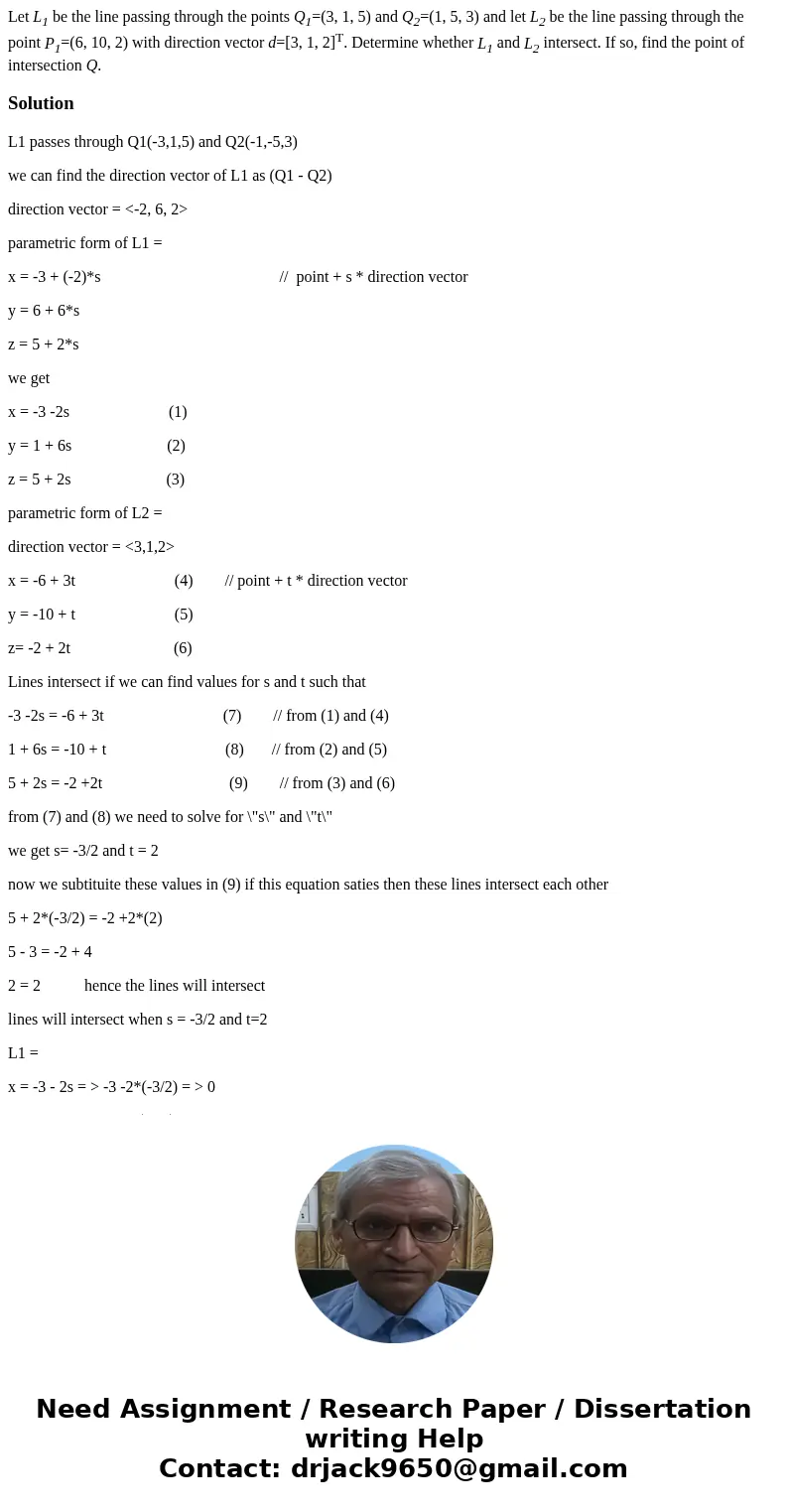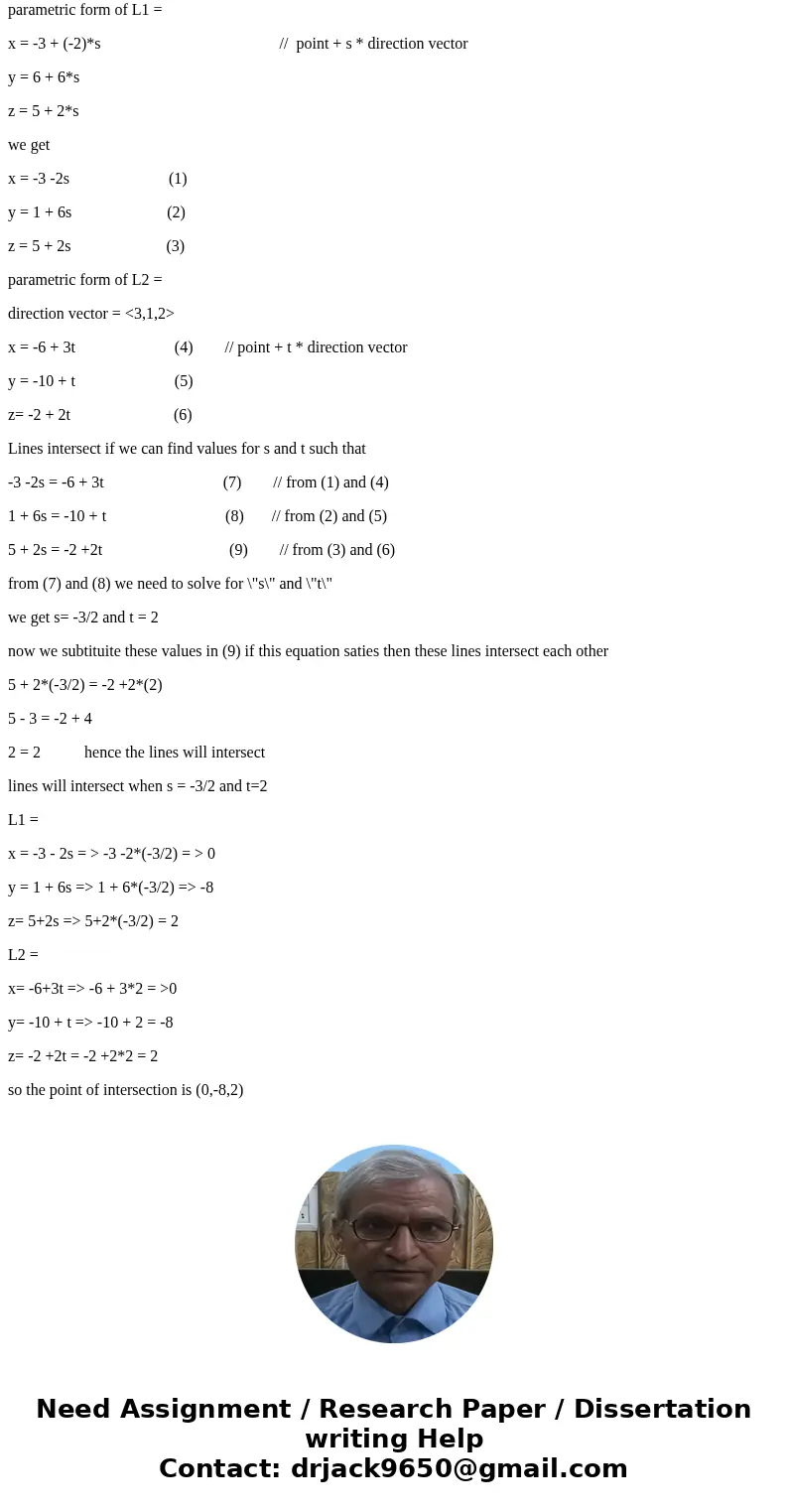Let L1 be the line passing through the points Q13 1 5 and Q2
Let L1 be the line passing through the points Q1=(3, 1, 5) and Q2=(1, 5, 3) and let L2 be the line passing through the point P1=(6, 10, 2) with direction vector d=[3, 1, 2]T. Determine whether L1 and L2 intersect. If so, find the point of intersection Q.
Solution
L1 passes through Q1(-3,1,5) and Q2(-1,-5,3)
we can find the direction vector of L1 as (Q1 - Q2)
direction vector = <-2, 6, 2>
parametric form of L1 =
x = -3 + (-2)*s // point + s * direction vector
y = 6 + 6*s
z = 5 + 2*s
we get
x = -3 -2s (1)
y = 1 + 6s (2)
z = 5 + 2s (3)
parametric form of L2 =
direction vector = <3,1,2>
x = -6 + 3t (4) // point + t * direction vector
y = -10 + t (5)
z= -2 + 2t (6)
Lines intersect if we can find values for s and t such that
-3 -2s = -6 + 3t (7) // from (1) and (4)
1 + 6s = -10 + t (8) // from (2) and (5)
5 + 2s = -2 +2t (9) // from (3) and (6)
from (7) and (8) we need to solve for \"s\" and \"t\"
we get s= -3/2 and t = 2
now we subtituite these values in (9) if this equation saties then these lines intersect each other
5 + 2*(-3/2) = -2 +2*(2)
5 - 3 = -2 + 4
2 = 2 hence the lines will intersect
lines will intersect when s = -3/2 and t=2
L1 =
x = -3 - 2s = > -3 -2*(-3/2) = > 0
y = 1 + 6s => 1 + 6*(-3/2) => -8
z= 5+2s => 5+2*(-3/2) = 2
L2 =
x= -6+3t => -6 + 3*2 = >0
y= -10 + t => -10 + 2 = -8
z= -2 +2t = -2 +2*2 = 2
so the point of intersection is (0,-8,2)


 Homework Sourse
Homework Sourse